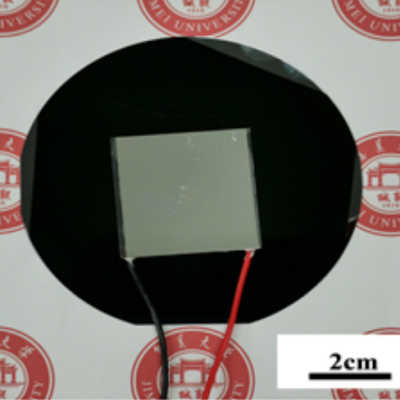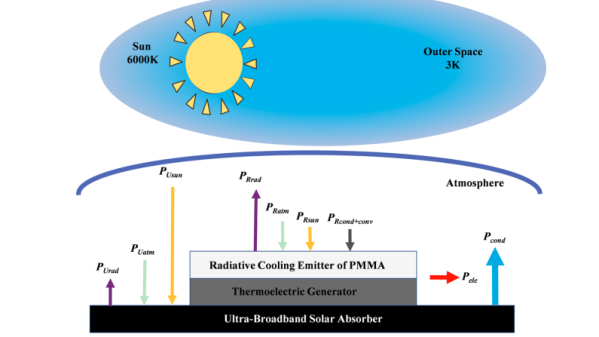A thermoelectric generator (TEG) can turn a temperature difference into electricity, and while temperature differentials abound in our environment, it’s been difficult to harness them into practical and stable sources of power. But researchers in China have succeeded in creating a TEG that can passively and continuously generate power, even across shifting environmental conditions. It’s not a lot of power, but that it’s continuous is significant, and it could be enough for remote sensors or similar devices.
Historically, passive TEGs have used ambient air as the “hot” side and some form of high-emissivity heat sink — usually involving exotic materials and processes — as the “cold” side. These devices work, but fail to reliably produce uninterrupted voltage because shifting environmental conditions have too great of an effect on how well the radiative cooling emitter (RCE) can function.

Here is what has changed: since a TEG works on temperature difference between the hot and cold sides, researchers improved performance by attaching an ultra-broadband solar absorber (UBSA) to the hot side, and an RCE to the cold side. The UBSA is very good at absorbing radiation (like sunlight) and turning it into heat, and the RCE is very good at radiating heat away. Together, this ensures enough of temperature difference for the TEG to function in bright sunlight, cloudy sunlight, clear nighttime, and everything in between.
As mentioned, it’s not a lot of power (we’re talking millivolts) but the ability to passively and constantly produce across shifting environmental conditions is something new. And as a bonus, the researchers even found a novel way to create both UBSA and RCE using non-exotic materials and processes. The research paper with additional details is available here.
The ability to deliver uninterrupted power — even in tiny amounts — is a compelling goal. A few years ago we encountered a (much larger) device from a team at MIT that also aimed to turn environmental temperature fluctuations into a trickle of constant power. Their “Thermal Resonator” worked by storing heat in phase-change materials that would slowly move heat across a TEG, effectively generating continuously by stretching temperature changes out over time.















